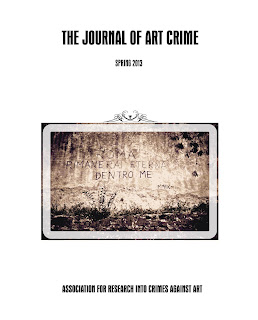Tuesday, August 06, 2013 -  artifacts,customs,Edirne,smuggling
artifacts,customs,Edirne,smuggling
 No comments
No comments
 artifacts,customs,Edirne,smuggling
artifacts,customs,Edirne,smuggling
 No comments
No comments
Edirne custom inspection discovered historical artifacts in hidden compartment of semi-truck destined for Germany
 |
| Coins found in hidden compartment of truck en route to Germany from Edirne, Turkey, near the Bulgarian border. (Asksham.com.tr) |
by Catherine Sezgin, ARCA Blog Editor
EDIRNE, Turkey - Acting on a tip that historical artifacts were being smuggled to Germany, Edirne Gendarmerie stopped a long semi-truck destined for Germany at a freeway toll booth and redirected it to a custom inspection point in Kapikule. Using x-ray technology, the located a hidden compartment behind the spare-parts storage area underneath the bed of the truck and found a marble head of a Roman goddess; two crosses used in Middle-Age Christian liturgies; an Achaemenid gold coin depicting a Persian archer; gold coins from the Classical Greek period; a coin with the image of the emperor Vespasianus; an Hellenistic silver coin; and possibly a 9th century ceramic cup used in religious ceremonies (Asksham.com, article here).
 |
| Crosses recovered at customs in Edirne (Habermonitor) |
According to Professor Engin Beksac, the head of the art history department at Trayka University in Edirne, the most important piece found is that of the 2,500 year old 'Persian archer' coin. This kind of coin is not found in the Thrace museums and rarely discovered anywhere else, Professor Beksac explained. The marble head of the goddess was likely part of a building's facade.
Here's a link to Aksham newspaper in Turkish along with photos of the objects recovered.
Here's a link to the Hurriyet video of a jendarma officer removing historical artifacts from a storage area of a semi-truck in Edirne, Turkey, near the Bulgarian border.














